CAMPAIGN BRAND BOOK & COMMUNICATIONS GUIDE



In northwest Montana, water is perhaps the most vital valuable natural resource; it is the element that connects all people, places, and living things . Flowing over borders, across state boundaries, and transcending human-made divides, water bonds mountaintops to riverbeds, connects cities upstream with communities downstream, and provides the link between our generation and all generations to come .
Montana Waters: Clearly Connected is an outreach initiative aimed at bringing partners together with coordinated messages, usable resources, and a centralized hub of information . The creation, development, and evolution of this campaign relies heavily on partnerships, both for effectively leveraging resources and extending outreach beyond the scope of any one organization, in order to collectively protect our abundant and beautiful Montana waters .

Establish a unified message with Montana Waters: Clearly Connected reflecting our geography and values to build the bridge between clean water and healthy communities through education and outreach
Outline principles and elements of behavior change messaging to improve effectiveness of communication initiatives
Include partnership strategies that leverage the strengths of partners, remove barriers to change, and expand the reach of the campaign
MONTANA WATERS: CAMPAIGN BRAND BOOK
Expand public knowledge and awareness of water quality issues
2 3 4
Increase coordination with watershed partners by increasing consistency of messaging, improving accessibility and awareness of available resources, and enhancing partnership opportunities
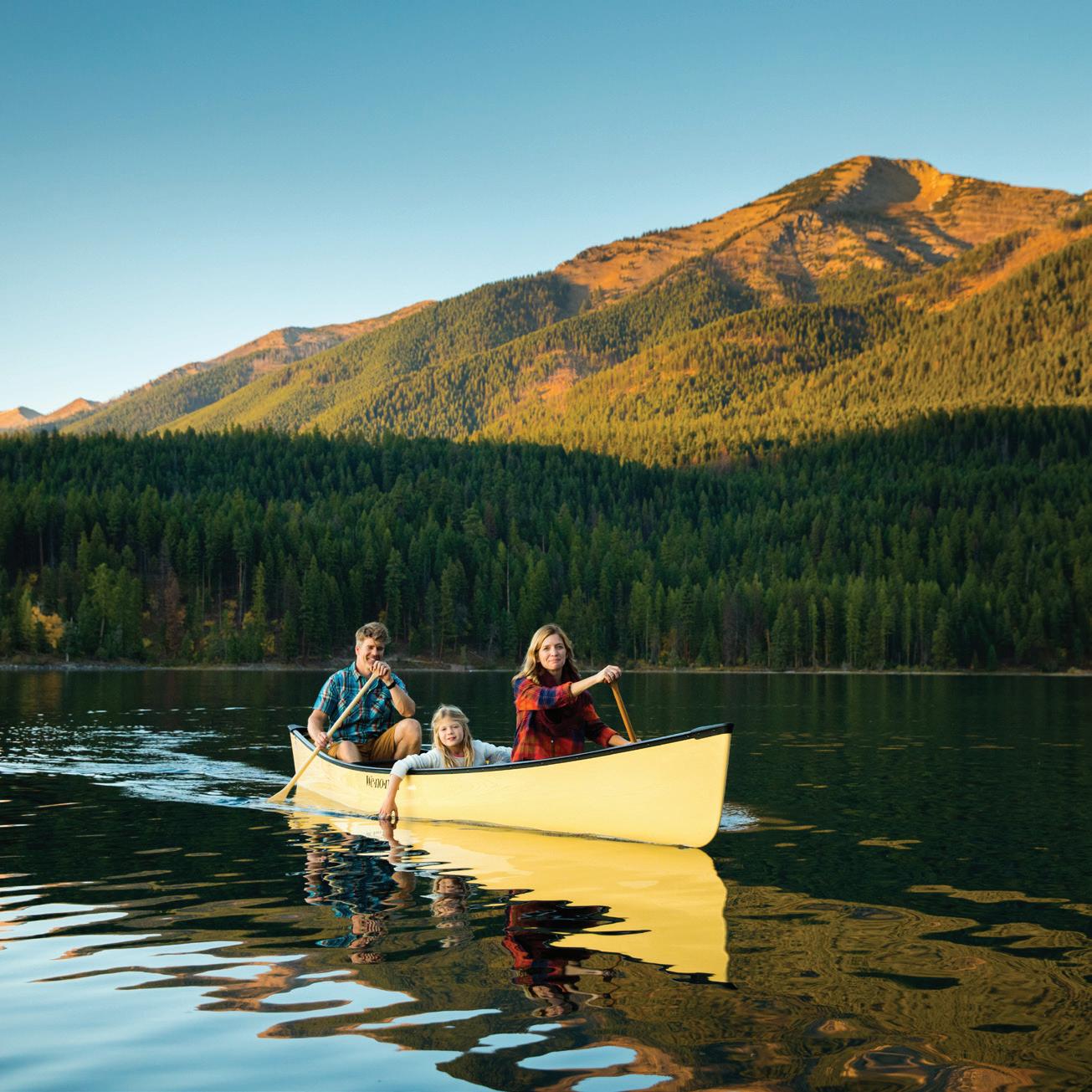
Inspire residents and visitors to take pride and responsibility in conservation efforts
Encourage individual and societal behavior change
Water is life. Preserving safe, clean water is vital to a healthy way of life for people, wildlife, and our ecosystem .

Every action makes a difference. The future depends on individual behavior change now; small actions add up to big improvements for our environment .
The time to act is now. As tourism and population rates in Montana continue to rapidly increase, our pristine waters and exquisite natural resources are facing unprecedented amounts of recreational use, growth, and development .

2 3 4 1
Voluntary collaboration of partners working to protect our waters
Working across boundaries to unite organizations with unified messaging
Sharing generously all resources, tools, and knowledge
The power of the collective effort to make real change in our watershed
PARTNERS IN CREATING AND SHARING THE CAMPAIGN
• Federal agencies
• State agencies
• Tribal governments
• Local governments
• Nonprofits
• Local watershed organizations
AUDIENCES OF THE CAMPAIGN
• Recreational water users
• General water users/the public
• Neighborhood and homeowners associations
• Building and realtors associations
• Legislators and policymakers
• Partner organizations

Clearly defined and targeted audiences
Content that speaks to audience values and identities
Based on a theory of change and informed understanding about the current barriers standing in the audience’s way
Breaks down complex change into clear, simple action steps
Trusted messengers
Clear focus on a specific behavior that our audience has the capacity and resources to change
Only makes one “ask” at a time—when the ask feels relevant, possible, and worth doing
Values are our fundamental principles—core to our identities

Leading with values activates emotions and opens an audience’s hearts and minds to the message
Connecting on shared values allows us to reach outside of stereotypes and partisan affiliation
It is easier to change people’s behavior than their values
Facts and figures can reinforce an idea—they do not persuade
Steps to create and continually recreate consistent individual behavior change . Visit page 20 to see how our communication plans can be effectively implemented with these steps in mind .
Credit: Dr. Doug McKenzie-Mohr Community-Based Social Marketing : Doug McKenzie-Mohr (cbsm.com)
Credit:

1
Raise awareness among and educate Montanans and visitors about how personal actions are connected to the health of our waters

2 3
Motivate behavior change actions with key audiences over time that reduce their impact on our rivers, lakes, and streams
Encourage local ambassadors and stewards to reach local audiences and support localized outreach efforts
PROFILE:
Montanans appreciate the natural, clean water environment their home state offers and aim to improve or maintain their quality of life, including a healthy environment, for generations to come .

TARGETING OPPORTUNITIES:
• Families and individuals by county and city (location)
• Families and individuals by interests: fishing, boating, swimming, outdoor recreating, etc .
• By renters, homeowners and landowners (both urban and rural)
• By vocation: agricultural workers, farmers, ranchers, landscapers, outdoor tourism, real estate,etc .
• By demographics (age, income, etc .)
PROFILE:
Out-of-state residents who travel to Montana to experience scenic views, wide-open spaces, clean water, world-class fishing and recreation, wildlife viewing, and more .
TARGETING OPPORTUNITIES:
• Luxury Travelers (Airbnbs, hotels, excursions, experiences, etc .)
• Cultural Travelers (historical sites, cultural sites, museums, visitor centers, etc .)
• Adventure Seekers (recreation, wildlife viewing, guided experiences, etc .)
• By hobby/activity, geographic area, destination, etc .
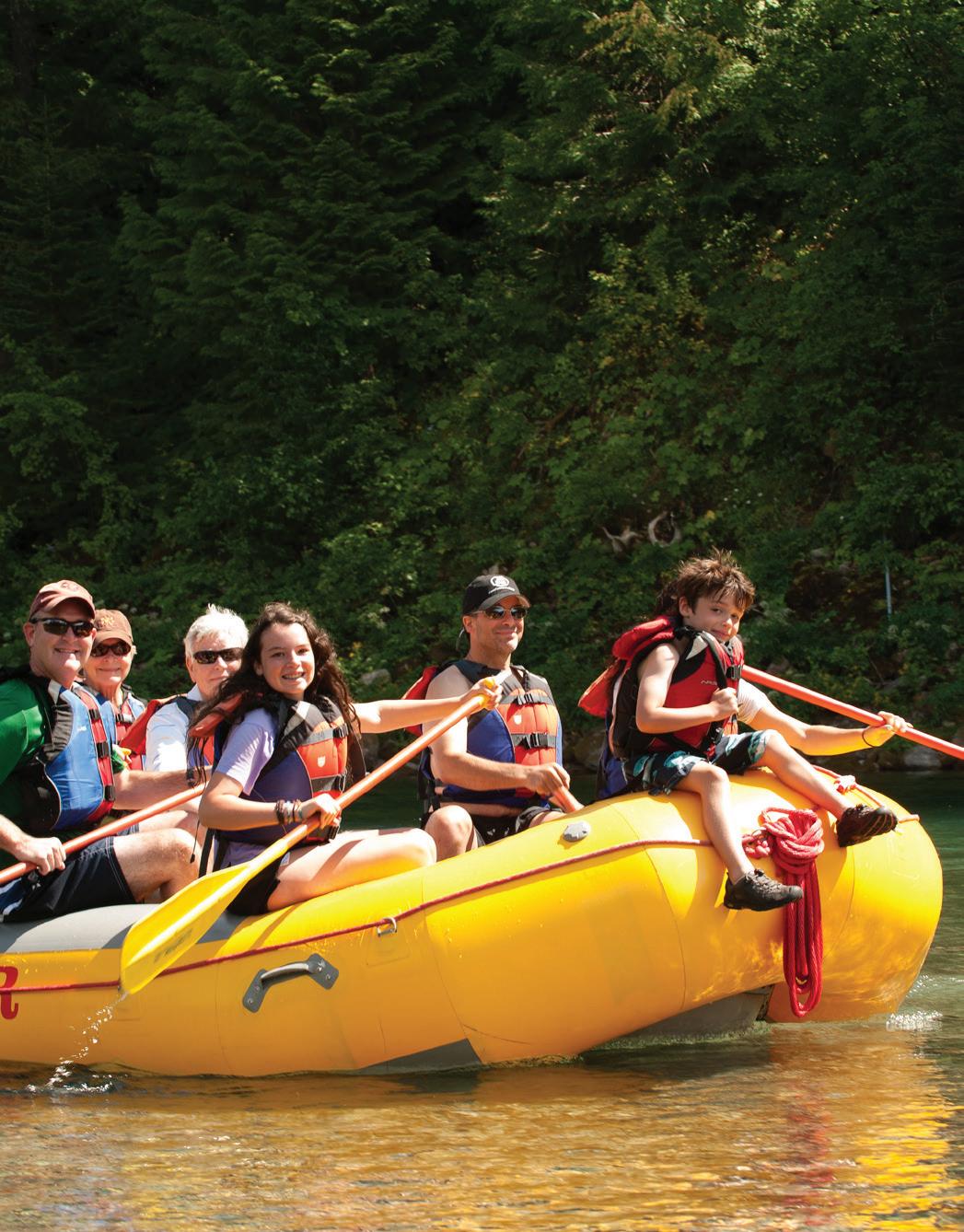
PROFILE: Internal representatives who have the authority and platforms to create behavioral change locally through public education, local programming, and influencing current or future policies .

PARTNERS:
• State government
• City and county governments
• Federal government
• Tribal governments
• Conservation districts
• Nonprofit organizations
• Local watershed organizations
PROFILE:
Public and private organizations that reflect Montana Waters values and believe in environmental progress for Montana .

PARTNERS:
• Homeowners and neighborhood associations
• Realtors and building associations
• Universities and colleges
• Agricultural associations and co-ops
• Fishing/recreation guides and businesses
• Watershed businesses
• Guaranteed reach with audiences
• Traditional placements include TV, print, radio, and outdoor advertisements
• Digital placements include TVOD (transactional video on demand, aka streaming), pre-roll video, search, social, and display digital placements (web banners)
• Opportunities to leverage custom promotions and advertorials (i .e ., event coverage, magazine inserts, custom social posts)
• Public-facing communications channels include word-of-mouth ambassadors, digital and physical newsletters, social media, public events, and websites
• Internal communication channels to stakeholders and partners include emails, reports, meetings, and forums
*funding and resources required
• Organic press coverage with relevant local news and media
• Organic peer-to-peer sharing of our messages across social, email, or word of mouth
• Supportive messaging from retailers and external partners
Opportunities for our communications to play a role in the transtheoretical model of change .
BARRIERS
“I have no understanding on how to aid clean water in Montana”
BARRIERS
“I have no understanding on how to aid clean water in Montana”
1
AWARENESS
“MT Waters’ vision and approach are vital for clean water in Montana”
ENGAGEMENT
“I want to learn more about the pros/cons and what I can do”
ACTION
“I am changing my behavior and invested in the results”
BARRIERS
“I don’t know that I’m contribution to the water problems”
BARRIERS
“I don’t know that I’m contribution to the water problems”
AWARENESS
“MT Waters’ vision and approach are vital for clean water in Montana”
ENGAGEMENT
“I want to learn more about the pros/cons and what I can do”
REMIND “I have reminders that can trigger the right behaviors”
AWARENESS
5 3 4 2
“This issue may impact me and my community negatively”
AWARENESS
“This issue may impact me and my community negatively”
EQUIP MYSELF
“I have a plan in place that addresses tangible barriers and can help create change”
EQUIP MYSELF
5 3 4 2
“I have a plan in place that addresses tangible barriers and can help create change”
ACTION
“I am changing my behavior and invested in the results”
PreContemplation Contemplation Preparation Action Maintenance
7 6
REMIND “I have reminders that can trigger the right behaviors”
8
EQUIP OTHERS
“My family or organization needs to prepare together”
EQUIP OTHERS
“My family or organization needs to prepare together”
REWARD
9
7 6
HERO
1 PreContemplation Contemplation Preparation Action Maintenance
“The actions of me and my community are celebrated”
9
HERO “The actions of me and my community are celebrated”
8
“I am celebrated as a Montana Waters Steward and am creating real, tangible change for our environment.”
REWARD
“I am celebrated as a Montana Waters Steward and am creating real, tangible change for our environment.”
Opportunities for our communications to play a role in the transtheoretical model of change .
BARRIERS
“I have no understanding on how to aid clean water in Montana”
BARRIERS
“I have no understanding on how to aid clean water in Montana”
1
AWARENESS
“MT Waters’ vision and approach are vital for clean water in Montana”
ENGAGEMENT
PAID & OWNED MARKETING DIGITAL
MT WATERS HUB
“I want to learn more about the pros/cons and what I can do”
ACTION
“I am changing my behavior and invested in the results”
BARRIERS
“I don’t know that I’m contribution to the water problems”
BARRIERS
“I don’t know that I’m contribution to the water problems”
AWARENESS
“MT Waters’ vision and approach are vital for clean water in Montana”
ENGAGEMENT
“I want to learn more about the pros/cons and what I can do”
PAID & OWNED MARKETING
REMIND “I have reminders that can trigger the right behaviors”
AWARENESS
5 3 4 2
“This issue may impact me and my community negatively”
AWARENESS
“This issue may impact me and my community negatively”
EQUIP MYSELF
“I have a plan in place that addresses tangible barriers and can help create change”
EQUIP MYSELF
5 3 4 2
“I have a plan in place that addresses tangible barriers and can help create change”
ACTION
“I am changing my behavior and invested in the results”
PreContemplation Contemplation Preparation Action Maintenance
7 6
REMIND “I have reminders that can trigger the right behaviors”
8
EQUIP OTHERS
“My family or organization needs to prepare together”
EQUIP OTHERS
“My family or organization needs to prepare together”
REWARD
9
9
7 6
HERO
1 PreContemplation Contemplation Preparation Action Maintenance
“The actions of me and my community are celebrated”
HERO “The actions of me and my community are celebrated”
EARNED, PAID, & OWNED MARKETING
8
“I am celebrated as a Montana Waters Steward and am creating real, tangible change for our environment.”
REWARD
“I am celebrated as a Montana Waters Steward and am creating real, tangible change for our environment.”
Opportunities for our communications to play a role in the transtheoretical model of change .
BARRIERS
“I have no understanding on how to aid clean water in Montana”
BARRIERS
“I have no understanding on how to aid clean water in Montana”
1
AWARENESS
ENGAGEMENT
ACTION
“MT Waters’ vision and approach are vital for clean water in Montana”
PAID & OWNED MARKETING
PreContemplation
BARRIERS
“I don’t know that I’m contribution to the water problems”
BARRIERS
“I don’t know that I’m contribution to the water problems”
DIGITAL
MT WATERS HUB
“I want to learn more about the pros/cons and what I can do”
INCENTIVIZE ACTION NORMALIZE THE BEHAVIOR
“I am changing my behavior and invested in the results”
PAID & OWNED MARKETING
MESSAGE EFFECTIVELY MAKE IT CONVENIENT MAKE IT CONVENIENT
REMIND “I have reminders that can trigger the right behaviors”
AWARENESS
ENGAGEMENT
“MT Waters’ vision and approach are vital for clean water in Montana”
AWARENESS
“This issue may impact me and my community negatively”
5 3 4 2
AWARENESS
“This issue may impact me and community negatively”
“I want to learn more about the pros/cons and what I can do”
EQUIP MYSELF
“I have a plan in place that addresses tangible barriers and can help create change”
5 3 4 2
EQUIP MYSELF
“I have a plan in place that addresses tangible barriers and can help create change”
ACTION
REMIND
“I am changing my behavior and invested in the results”
7 6
“I have reminders that can trigger the right behaviors”
PreContemplation Contemplation Preparation Action Maintenance
EQUIP OTHERS
8
REWARD
1 Contemplation Preparation Action Maintenance
“My family or organization needs to prepare together”
EQUIP OTHERS
“My family or organization needs to prepare together”
MESSAGE EFFECTIVELY DIFFUSE THE BEHAVIOR MAKE IT CONVENIENT INCENTIVIZE ACTION GET A COMMITMENT
9
HERO
“The actions of me and my community are celebrated”
9
7 6
HERO
“The actions of me and my community are celebrated”
PEER TO PEER MODELING NORMALIZE THE BEHAVIOR
EARNED, PAID, & OWNED MARKETING
8
“I am celebrated as a Montana Waters Steward and am creating real, tangible change for our environment.”
REWARD
“I am celebrated as a Montana Waters Steward and am creating real, tangible change for our environment.”
Establish the campaign vision and mission under one unified message around clear, connected water resources as a trusted messenger whose values and ambitions are here to positively care for the people, the water, and the environment of Montana . Rather than focusing on who is behind the campaign, we will bring to life an umbrella message that connects partner efforts under one identity for our target audiences to pay attention to and remember . This messaging should be incorporated into every piece of Montana Waters communication .
Drive emotional resonance to inspire everyday Montanans and campaign partners with the greater “why” of aiding a clear, connected, clean water ecosystem . We need all our target audiences to feel connected to the rivers, lakes, and streams that surround their communities . While they may be somewhat conscious about their everyday impact on local waterways, fish, and wildlife, we have the opportunity to incorporate our shared values into the conversation . Those values include a strong passion for people, a desire to deliver constant education and outreach among diverse communities, and enjoying the protected clean water environment we create together . This can be done seasonally to match audience contexts and to complement rational messaging .
Positively suggest ways everyone can participate and play their part by educating our target audiences with the practical knowledge necessary to create healthier water in Montana . This can be done with seasonal messages that are contextuallyrelevant to the behaviors of each yearly moment .
• “Montana Waters: Clearly Connected”
• “Together we can keep our waters clean, one small action at a time . ”
• “Be septic smart . Maintain your septic system…learn more at…”
• “Keeping Montana Waters clean, clear, and connected, together”
• “Be a Montana Waters Steward and help keep our waters clean, clear, and connected”
• “When our waters are clean, our fish and wildlife stay healthy—and so do we . ”
• “Together we can keep Montana Waters clean and clear for generations to come . ”
• “Clean water starts at the curb . Adopt-a-Drain in your local community…”
• “Protect your local waterbodies by installing a rain garden on your property . Learn more at…”
1 2 3 4 5 6
FAIRNESS AND ACCURACY: Environmental and conservation education and outreach materials should be fair and accurate in describing environmental problems, issues, and conditions and in reflecting the diversity of perspectives on them . Focus on local impacts, recognizing the diversity in local communities, to build bipartisan support .
DEPTH: All communications materials should foster awareness of the natural and human-made environments; an understanding of environmental concepts, conditions, and issues; and an awareness of feelings, values, attitudes, and perceptions at the heart of environmental issues, as appropriate for different developmental levels .
EMPHASIS ON SKILLS BUILDING: Communication materials should build lifelong skills that enable learners to prevent and address environmental issues on an individual level .
ACTION ORIENTED: Materials should promote civic responsibility, encouraging learners to use their knowledge, personal skills, and assessments of environmental issues as a basis for environmental problem solving and action .
INSTRUCTIONAL SOUNDNESS: Education materials should rely on instructional techniques that create an effective learning environment .
USABILITY: Environmental and conservation communications materials should be well designed, relevant to target audiences, and easily accessible for widespread use .

The following list of recommendations for communicating effectively to build support for conservation is based on a 2018 report titled “The Language of Conservation,” which builds on national research commissioned by The Nature Conservancy dating back to 2004 . This research discovered that three elements continue to be the most critical in communicating conservation efforts; they reference these as
The three W’s of water, wildlife, and way of life.
From their research, voters prioritized water as a critical reason to engage in conservation with a vast majority of individuals polled seeing it as “very important” to:
Protect our drinking water quality
87% Protect waterbodies and the fish that live in them
73%
Prevent pesticides and fertilizers from running off farmland and into rivers and streams
68%
Act as natural filters for our air and help keep pollutants out of our drinking water, fish, and other foods
67%
Protecting “drinking water” consistently ranked as the highest concern for the majority of voters polled; this implies a connection to public health, which resonates on a deeper level with voters .
“Nothing is more important than having clean water to drink. By conserving natural areas, forests and wildlife habitat, we can reduce runoff and toxics in the lakes, river and streams that bring us clean drinking water.”
• DO always communicate water as the primary element or impact of a project
• DO highlight how conservation benefits wildlife
• Do evoke localized examples that speak to how conservation efforts preserve a “way of life” important and unique to that area
• DO instill urgency—but without doom and gloom messaging
• DO connect conservation to public health—both physical and mental
• DO use phrases that imply ownership and inclusion, such as “our” and “we”
• DO use “front-line” messengers to communicate in support of conservation efforts (i .e ., representatives that are already highly trusted within your community)
• DO continue to use a “future generations” message and images of children and families in the outdoors to evoke a sense of home and community
• DO couple outdoor recreation with economic impact
• DO reinforce the compatibility between having a strong economy and preserving land, water, and wildlife
• DO highlight the diverse partnerships and collaborations in support of conservation efforts
• DO maintain a hopeful, optimistic tone
• DO talk about conservation as part of a long-term plan for a community’s quality of life
• DO speak to audiences’ pride of place
• DON’T make access to public lands or natural areas the centerpiece of appeals for conservation . This rationale only ranked highly among anglers and hunters, not the general public
• DON’T make global warming/climate change the primary rationale for conservation; however, referring to climate change in passing as part of a broader argument for conservation has generally been received neutrally from audiences
• DON’T use alarmist, negative messaging; instead instill a sense of urgency with positive and hopeful undertones
• DON’T use overly scientific terms in public messaging; terms like “aquifer”, “biodiversity”, and even “watershed” are relatively unfamiliar and do not resonate with the general public
• DON’T exclude or ignore indigenous populations’ presence, vital perspective, and generational expertise when creating messaging for our land and waters
• DON’T overcomplicate your messages; instead focus on a few small actions and emphasize how each has an impact in our watershed
• DON’T rely solely on facts and data to educate the public; instead explain in simple terms what the data means for our environment and people in their everyday lives
Front-line communications with the community to inspire and educate with Montana Waters message . This can include signage, swag and paid media placements communicating about our water .
Build on relationships with media outlets in the area . Sending out press releases and media advisories increases the likelihood that local media outlets will report on your efforts .
Owned media includes everything from social media channels, websites and email newsletters . Deliver messages for seasonal tips and tricks to create a healthy environment for individuals and our water .
Tap into the local community to ignite a conversation about clean water in Montana . Build relationships with leaders, private and nonprofit organizations and explore opportunities to extend our reach .
EFFECTIVENESS MEASUREMENT & METRICS
• Paid: awareness, clickthrough-rates, engagement with ads, social shares, etc .
• Owned: Website traffic, time spent on website, resource downloads, website actions, email open rates, social engagement, social shares, video views, time watching videos, etc .
• Earned: public relations impressions, local news coverage, social tags and shares, public sentiments, partner features, etc .
• Number of participants engaging in volunteer initiatives
• Number of social media followers
• Number of participants applying for cost share and home/landowner grant programs
• Increase in clean water protection actions
• Improved clean water and environmental metrics
• Number of newsletter subscribers
• Number of volunteers
• New campaign partners and messengers
• Increase in proclaimed and committed Montana Waters Stewards
 Flathead River, Glacier National Park NPS
Flathead River, Glacier National Park NPS
The Montana Waters: Clearly Connected campaign is a broad coalition of organizations fostering the connection between clean water and healthy communities for the benefit of all . We are stewards of our Montana Waters, encouraging the public to protect our abundant natural resources .
Montana Waters works to raise public awareness about protecting clean water in Montana by empowering people to adopt everyday behaviors to preserve our rivers, streams, and water resources .
We aim to increase connection between partners who protect our water and build a network of coordination to further effectiveness of water quality protection efforts .
We connect people to their local waters, inspiring them to make positive change through equitable education and outreach .
Clean water is essential to sustaining life and is vital to preserving the exquisite, natural beauty of Montana . Specifically, northwest Montana is part of the extraordinary water source in the Crown of the Continent that feeds three of the earth’s five oceans; often referred to as the “headwaters of North America .”
As precipitation flows from the pristine headwaters in Glacier National Park and the Bob Marshall Wilderness, it connects nearly 6 million acres of spectacular wilderness and forestland, productive farms and ranches, vibrant cities, and peaceful residential areas .
We work to ensure Montanans and all who visit Montana feel that connection between our water and all people, places and living things, inspiring them to do their part to protect this resource for our generation and generations to come .
Protecting water quality in Montana may seem daunting, but there are tangible things each of us can do every day to make sure we continue to have clean water to drink and recreate in .
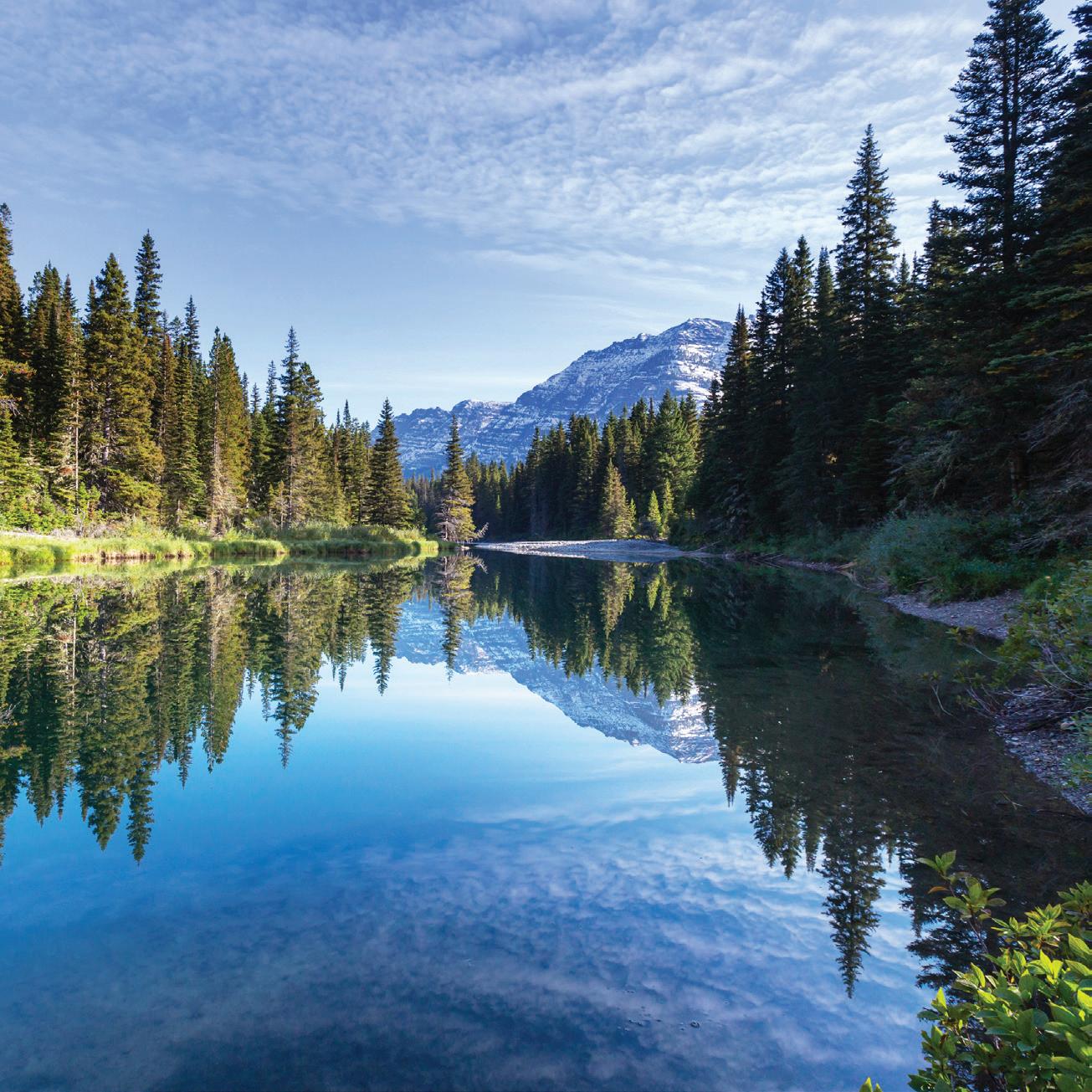
• Wash your car at a commercial car wash instead of in your driveway . At a car wash, the dirty water runs into the sanitary sewer and is treated at a local wastewater treatment facility . When you wash in your driveway, the dirty water carrying oil, grease, and other pollutants runs into a storm drain that likely flows directly to your local waterbody untreated and can contaminate our drinking water .
• Promptly clean up and dispose of pet waste to prevent bacteria and excess nutrients entering storm drains and eventually local waterways .
• Properly dispose of household hazardous products, like paint, motor oil, insecticides, and medications at a collection facility and never dump chemicals into your drains, sinks, or toilets .
• If you’re a septic system owner, get your septic system inspected annually and pumped every 3-5 years to prevent system failures which can cause septic effluent to flow directly into the soil and nearby surface and groundwater .
• When you recreate, make sure to clean, drain, and dry your watercraft and gear and stop at all inspection stations to prevent the spread of invasive species . Aquatic invasive species—such as zebra mussels—can permanently replace native species, clog waterways, degrade irrigation and hydropower systems, harm wildlife, and cause public health problems .
• If you are a waterfront property owner, avoid mowing to the waters edge and plant a diversity of deep-rooted native vegetation to promote native habitat .
• If you use fertilizers and pesticides on your property, do so sparingly and follow the directions on the back of the container . These types of chemicals runoff into our waterways and can cause algae growth and harm aquatic life .
• Keep an eye on your local waterways and report any oddities like invasive species, harmful algal blooms, pollution, or others to your local water management agency .
• Encourage responsible development in your local community by building in upland areas where the groundwater is not shallow and limiting the density of development, including paved areas, over the aquifer .
• Work with your local land and water managers to protect our wetlands, maintain wildlife habitats, and reduce erosion through community science initiatives, river restoration projects, and more .
• Get involved with volunteer programs and events in your local area .
• Please visit our website for more information at montanawaters.com .
• Share what you have learned about the importance of protecting your local waters with your friends, family, and community to help them become Montana Water Stewards too .
 Flathead Lake, Eric Melzer Photography
Flathead Lake, Eric Melzer Photography
The Montana Waters logo must be presented consistently . Please adhere to the following guidelines . The primary logo should be used without alteration in full color when possible . Horizontal, compact, black and white, and one color versions are available .
The logo should always be clearly legible . Always size the logo proportionally . The primary logo can be as small as 1 .25” wide or 125 pixels wide .
The protected area surrounding the Montana Waters logo should be clear of text and/or other logos . In the logo, the size of the protected area is equal to the height of the mountains on the left side of the icon .
PRIMARY LOGO
MT WATERS_STACKED
COMPACT LOGO
MT WATERS_COMPACT
HORIZONTAL LOGO
MT WATERS_HORIZONTAL
PRIMARY LOGO
PRIMARY LOGO
MT WATERS_STACKED FULL COLOR
PRIMARY LOGO, BLUE
MT WATERS_STACKED BLUE
PRIMARY LOGO, BLACK
MT WATERS_STACKED BLACK
PRIMARY LOGO, WHITE
MT WATERS_STACKED WHITE
COMPACT LOGO
COMPACT LOGO
MT WATERS_COMPACT FULL COLOR
COMPACT LOGO, BLUE
MT WATERS_COMPACT BLUE
COMPACT LOGO, BLACK
MT WATERS_COMPACT BLACK
COMPACT LOGO, WHITE
MT WATERS_COMPACT WHITE
HORIZONTAL LOGO
HORIZONTAL LOGO
MT WATERS_HORIZONTAL FULL COLOR
HORIZONTAL LOGO, BLUE
MT WATERS_HORIZONTALBLUE
HORIZONTAL LOGO, BLACK
MT WATERS_HORIZONTAL BLACK
HORIZONTAL LOGO, WHITE
MT WATERS_HORIZONTAL WHITE
Below are examples of incorrect uses of the Montana Waters logo .
Do not stretch the logo.
Do not distort the logo.
Do not adjust the color.
Logo should be legible at its final size.
Do not change the position or proportion of the text.
Do not rotate on an angle (unless in relation to context).
Do use the full-color logo if it is clearly legible .
Ensure the logo is clearly legible when place on a photo . Avoid using the full color logo on busy backgrounds .

Do not use the white logo if it is not legible .
Do not use the full-color logo if it is not legible .
Do use the white logo if it is clearly legible .
Below is the primary color palette for the Montana Waters brand . The palette contains a variety of hues and tints inspired by Montana’s bodies of water . When possible, stay within the colors provided when creating promotional materials .
SUBSURFACE
The main font for the Montana Waters brand is Trade Gothic . It’s a sans serif typeface with a combination of italic, regular, and bold options and easily complements imagery and messaging . The font within the Montana Waters logo is Montserrat .
The font can be used for headlines within promotional materials .
MONTSERRAT BLACK
ABCDEFGHIJKLMNOPQRSTUVWXYZ abcdefghijklmnopqrstuvwxyz
1234567890 !@$%-+&()
TRADE GOTHIC LIGHT
ABCDEFGHIJKLMNOPQRSTUVWXYZ abcdefghijklmnopqrstuvwxyz
1234567890 !@#$%-+&()
TRADE GOTHIC BOLD
ABCDEFGHIJKLMNOPQRSTUVWXYZ abcdefghijklmnopqrstuvwxyz
1234567890 !@#$%-+&()
TRADE GOTHIC LIGHT ITALIC
ABCDEFGHIJKLMNOPQRSTUVWXYZ abcdefghijklmnopqrstuvwxyz
1234567890 !@#$%-+&()
TRADE GOTHIC CONDENSED
ABCDEFGHIJKLMNOPQRSTUVWXYZ
abcdefghijklmnopqrstuvwxyz
1234567890 !@#$%-+&()
These graphic icons provide information related to Montana Waters and related activities at a glance .
AQUATIC INVASIVE SPECIES & RECREATION
SEPTIC LEACHATE & WASTEWATER
RESIDENTIAL
LAND MANAGEMENT
NUTRIENT POLLUTION
OTHER IMPACT
VOLUNTEER
STORMWATER
Montana Waters: Clearly Connected acts as a regional, collective outreach campaign and relies on the collaboration and participation of watershed partnerships to effectively achieve campaign goals This requires partners to share the Montana Waters campaign and brand alongside their existing organizational logos and identities . This kind of co-branding brings participating partner brands, reputations, audiences, and values together with the campaign brand and values . Co-branding creates a network of sharing and effectively widens both parties’ audiences, solidifies audience trust, and generates more reach and participation .

Proper co-branding should always start with value alignment . Any participating campaign partners and their organizations should review the values and brand identity of the Montana Waters campaign and ensure their organizational values align and complement those of the campaign .

It is important for partners’ target audiences to match Montana Waters target audiences . Proper audience alignment sets the stage for successful messaging and maintaining audience awareness .
When sharing information from both local organizations and the Montana Waters campaign it is important to keep messages short, simple, and concise . Focus on fewer, bigger coordinated efforts (instead of smaller, more specific efforts) to make a greater impact .
It is important to remember that while the Montana Waters campaign is an effort to connect partners, provide resources, and reach a wider percentage of our target audiences, the real work to protect and preserve clean, clear water in Montana is in large part done by the participating organizations and their staff and volunteers. These hardworking groups and individuals deserve continual acknowledgment and recognition for their important work.
WE ALL LIVE IN A WATERSHED .
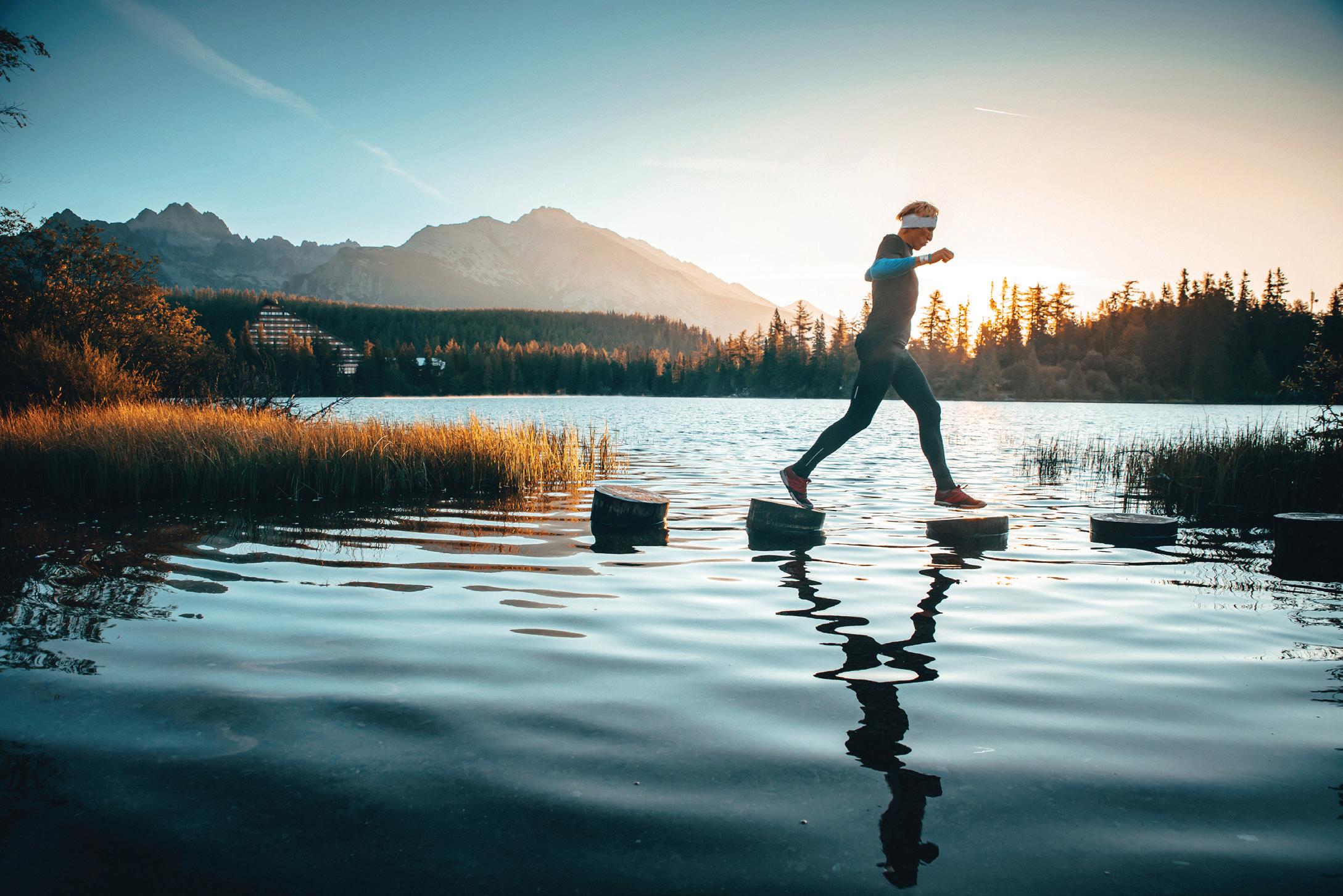
Selected photography should be dramatic, inspiring and located in Montana . As a collection they should represent all types of waterbodies within Montana . Dramatic landscapes that include large bodies of water should be the priority when choosing photography for the Montana Waters brand . Candid photos that include people interacting with and enjoying those waterbodies are also excellent choices for photographic images . All photos should highlight the beauty and stunning qualities of Montana’s bodies of water .


Pixelated and low resolution photos should never be used . High resolution photos that are intended for print should be 300 dpi and photos used for digital should be 72 ppi minimum . Photos must not be enlarged beyond their true size at 100% .
Montana Waters campaign photos can be found in our toolkit here: montanawaters.com/resources
To the right is an example of a photo credit . It should lead with the location of the image, followed by the photographer’s name in italic . Both should be in sentence case at 7pt and separated by a comma . Stock photos do not need to be credited . For social media, photo credits should be included in the caption .

Photography should be used to enhance the intended message for all aspects of collatoral . At times a photograph may be used as the background image on a page with nothing but the logo applied on top of it . Other times photographic imagery is used to support the information being presented . When placing typography or logos on top of an image it is important to place them in a spot that does not obscure the dramatic focal point of the image .

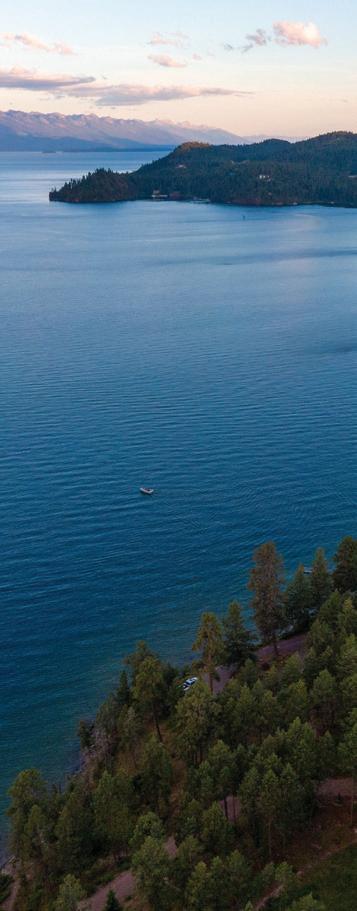
Montana Waters digital files and visual elements can be found in our toolkit here. montanawaters.com/resources
Social Media
WE ALL LIVE IN A WATERSHED .
OUR WATER NEEDS YOU .
TOGETHER, WE CAN KEEP OUR WATER CLEAN, CLEAR, AND CONNECTED
BE A MONTANA WATERS STEWARD .







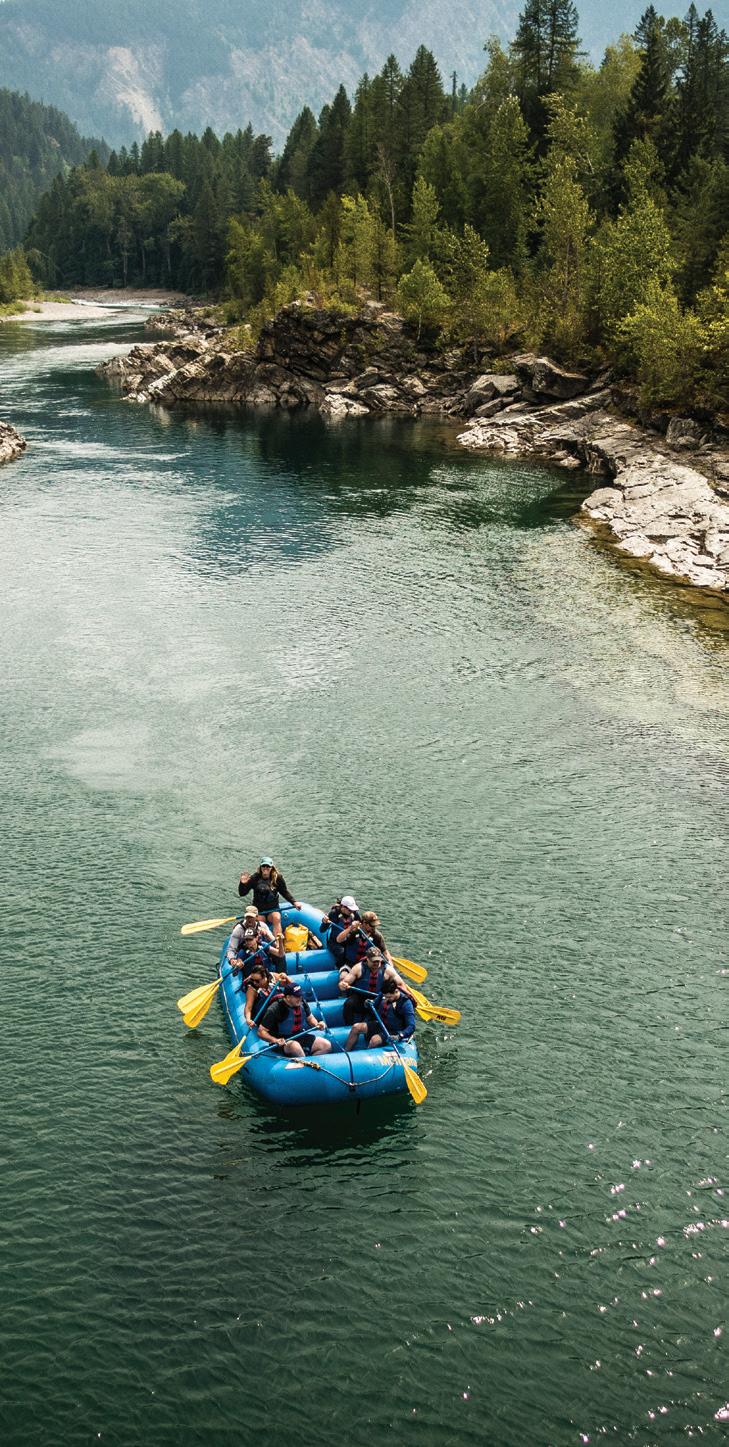
We
MONTANAWATERS . COM

all live in a watershed . Together we can keep our waters clean, clear, and connected for generations to comeFlathead Lake, Visit Montana